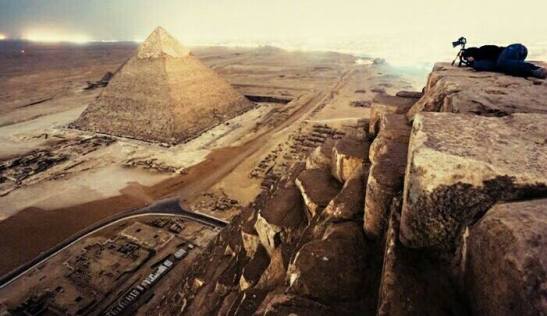
Arabic sources are the first choice for mysterious legends around the pyramids. Regarding the Quranic verse, 87:18-19 “This is in the first scriptures, the scriptures of Abraham and Moses”, Ibn Kathir writes, “First scriptures” means the scriptures which were revealed to Adam’s son Seth and Idris.”
Abu l-Hasan al-Masudi writes, “One of the two pyramids is the tomb of Agathodaimon (Seth), the other one is the tomb of Hermes (Idris). Between the two 1000 years elapsed, Agathodaimon was the older one”.
According to al-Tabari, “God made him (Idris) a prophet after 622 years of Adam’s life had passed. Thirty scriptures were revealed to him. He was the first to write after Adam…He inherited from his father Jared that which his forefathers had bequeathed upon him, and had bequeathed to one another. All of this he did during the lifetime of Adam”.
Mamluk-era Sunni Arab historian, unique for his keen interest in the Fatimid dynasty and its role in Egyptian history Taqi al-Din al-Maqrizi writes, “They had leaves of paper with writings on it, and after a stone had been broken and worked in the quarry, they put those papers on the block and could then move the stone with a single push over a distance of 100 Sahm (ca. 300 m); they repeated this until the stone was on the pyramid.”
In ‘The Secret Books of the Egyptian Gnostics’ author Jean Doresse writes , “Seth… is known in Islam, and usually assimilated to Agathodaimon, who is one of the great figures of Hermetic literature. The prophetic prestige with which the Gnostics endowed him, he still possesses…In these particular doctrines the survival of Gnostic themes is ubiquitous and seems immense…”

19:56-57: Mention, in the Book, Idris, that he was truthful, a prophet. We took him up to a high place.

